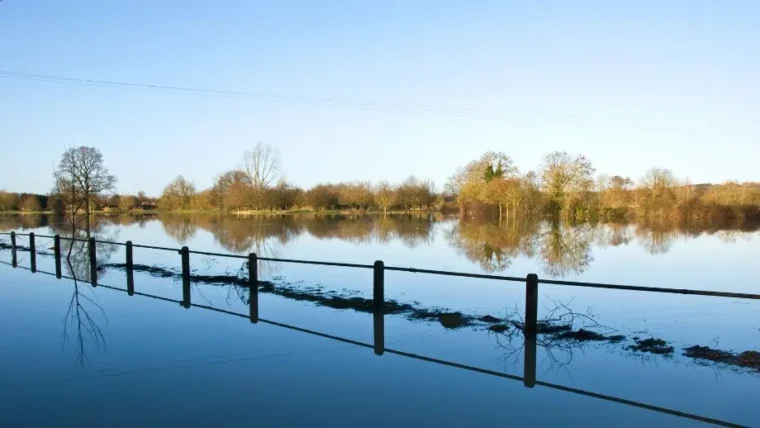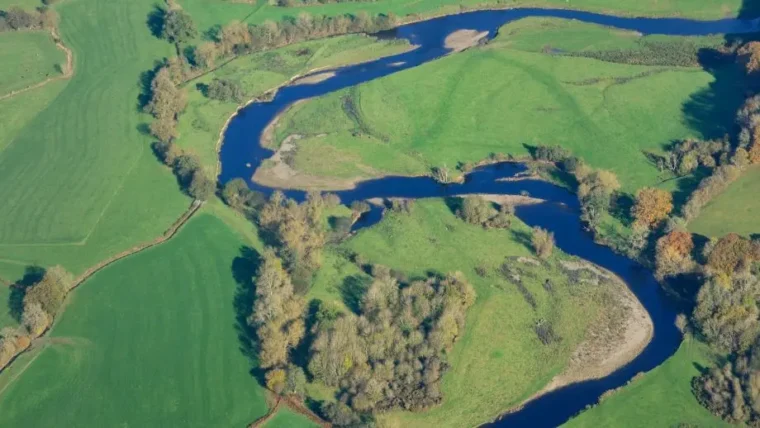Fortnightly Bulletin – 4th November 2024
4 November 2024

Guidance
Treating and using water containing concrete at construction sites: RPS 287
This Regulatory Position Statement (RPS) does not change your legal requirement to obtain an environmental permit for a waste operation when you store, treat or use waste water containing concrete at construction sites.
However, the Environment Agency (EA) will not normally take enforcement action if you do not comply with these legal requirements provided that your activity meets the description set out in this RPS, and you comply with the conditions set out in this RPS. In addition, your activity must not cause (or be likely to cause) pollution of the environment, or harm to human health, and must not:
- cause a risk to water, air, soil, plants or animals,
- cause a nuisance through noise or odour,
- adversely affect the countryside or places of special interest.
This RPS applies to storing, treating and using waste water containing concrete on a construction site before use or disposal. This can include water produced by washing out of equipment such as concrete mixers, concrete batching plants, delivery vehicles and related equipment like chutes, pump lines, drums and wheelbarrows.
Under this RPS you can use treated waste water containing concrete for washing equipment and untreated or treated waste water containing concrete for producing new concrete.
Untreated or treated waste water containing concrete must not be used to suppress dust.
This RPS does not apply to water containing grouts.
Storage
You must:
- Store the waste water securely, which means that the waste water cannot escape, and unauthorised people cannot access the water.
- Contain the waste water before treatment or use, for example contained within an impermeable settling tank, engineered lagoon or leakproof skips.
- Maintain a freeboard of 10% of the capacity of the tank, engineered lagoon or leakproof skips to prevent overtopping.
- Store no more than 30m3 of waste water containing concrete at any time in a single location on the construction site.
Treatment
The waste water containing concrete must only be treated by the following methods:
- Filtration, settlement lagoons or physical dewatering, for example in a settlement tank, silt press or other specialised treatment system.
- Correction of pH using solutions or carbon dioxide before use of lawful disposal.
- Using products that solidify water containing concrete prior to use or transfer from the construction site.
The specialist treatment systems must be operated and maintained using trained operatives in line with the manufacturer’s instructions.
Chemicals and flocculants other than products to solidify water containing concrete must not be used.
Use
You must:
- Monitor the pH of the waste water containing concrete and keep records of compliance of the treated water prior to use or lawful disposal.
- Comply with your waste environmental permit or exemption if you want to use set concrete on the construction site.
Locations
You must not carry out activities associated with storing, treating or using waste water containing concrete within ten metres of any watercourse and within 50m of:
- Sites of Special Scientific Interest (SSSI)
- Special Areas of Conservation (SACs) including proposed SACs
- Special Protection Areas (SPAs) including potential SPAs
- Ramsar sites – wetlands of international importance (both listed and proposed)
- Marine Conversation Zones
- Other nature conservation sites such as ancient woodlands and local and national nature reserves
- Local wildlife sites.
The EA intends to review this RPS by 30 June 2027.
The EA can withdraw or amend this regulatory position before the review date if they consider it necessary. This includes where the activity that this RPS relates to has not changed.
Source: Gov.UK
For the full guidance, click here.
Articles of Interest
Government crackdown on single-use vapes
Circular Economy Minister Mary Creagh confirmed that new legislation to ban the sale of single-use vapes from 1 June 2025 has been laid in Parliament.
Single-use vapes are not rechargeable or refillable. They are typically discarded as general waste in a bin or as litter, rather than recycled, which is contributing to a flood of litter on the streets. The lithium-ion batteries within the units pose a fire risk within wastes containing single-use vapes at recycling facilities, where they usually have to be disassembled by hand.
Materials Focus estimated that almost five million single-use vapes were either littered or thrown away in general waste every week last year in the UK.
Making the sale of single-use vapes illegal will deliver on the Government’s commitment to act on this important issue and kick-start the push towards a circular economy. This will also help curb the rise of young people taking up vaping while protecting the natural environment and town streets from the tide of litter.
The ban is part of the Government’s commitment to end the nation’s throw-away culture and stop the avalanche of rubbish that is filling up on the high streets, countryside, and oceans.
Source: Gov.UK
For the full article, click here.
CIWM applauds disposal vapes ban and calls for lessons to be learned
The Chartered Institution of Wastes Management (CIWM) applauds the Minister for Nature, the UK Government, and the Devolved Administrators and welcomes the timely and entirely sensible commitment to ban disposable vapes as soon as practicable.
Single-use disposable vapes are a clear example of a poorly designed product manufactured and sold with only short-term profit in mind, marketed at children and adults alike, and with little evident social or environmental responsibility shown by producers, retailers, or importers.
The case is strengthened for Extended Producer Responsibility to ensure the true cost of putting huge volumes of such products on the market is placed on those parties rather than on the parties who pay for and clean up the issues created afterwards.
These non-recyclable single-use products are simply wasteful and harmful to people and the planet, and create litter in our streets and local environments. They cost local authorities millions of pounds to clean up and cause fires in waste streams putting industry workers’ health and safety at risk.
Lessons must be learnt quickly of such poor product design and short-term thinking as we move towards a more circular economy and a world beyond waste.
Source: CIWM
For the full article, click here.
Pilot project to trial tech that prevents batteries igniting in household waste recycling centres
A new pilot project to trial a system that isolates batteries or their parent devices in waste and recycling centres to reduce the risk of fires will be carried out at a Materials Recovery Facility in Portsmouth.
Barnbrook Systems, Flair, and TJ Waste & Recycling are collaborating on the project in Portsmouth.
The pilot is based on Barnbrook and Flair’s E-bag system, which is designed using nanotechnology to create its temperature-sensitive smart fabric. The system can adapt to completely smother a battery or hardware once it has been placed inside to prevent ignition or extinguish flames.
The E-bag is being adapted for the trials at TJ Waste & Recycling’s Materials Recovery Facility (MRF) at Tipner in Portsmouth.
A major fire involving 117tonnes of material occurred at the facility on 6 July 2024 which was believed to have been caused by a lithium-ion battery.
The managing director of Barnbrook Systems said, “this is game-changing technology which can deal with the increasing threat from lithium-ion batteries”.
As part of the pilot, operatives sifting materials at TJ Waste & Recycling will have purpose-made portable bags into which they can place suspect or hazardous devices. The secured bag can then be taken outside for processing. Larger sacks with be available to contain bigger batteries which can be lifted by forklift and removed by a disposal company.
Source: CIWM
For the full article, click here.
Producer responsibility for packaging regulations laid in parliament
The full extended producer responsibility for packaging (pEPR) regulations were laid in parliament on 24 October 2024. The regulations will need to sit for 40 days before they can be passed.
The final text of the regulations, which outlines the details of the legislation, is available to view on the government website.
The Independent Chair of the Interim Steering Group and Chair of Waste and Resource Action Programme (WRAP), Stephen Munden commented that “the laying of the pEPR regulations is a significant step towards circular living, and reshaping how we produce, consume, and manage resources. Creating a more circular packaging system across the UK, incentivising brands to use less packaging overall and to use better materials which are recycled, and recyclable, is crucial.”
pEPR was first introduced in the United Kingdom (UK) as part of the Resources and Waste Strategy 2018, alongside a series of other reforms including the Deposit Return Scheme (DRS) and simpler recycling. The regulations aim to shift the costs of managing packaging waste to producers from other stakeholders in the packaging value chain, for example local authorities.
Source: Letsrecycle.com
For the full article, click here.
Events
Waste Documentation Training Course
Delivered in-house at customer sites or remotely over half a day.
EMS provide training for those responsible for managing waste and completing waste documentation.
The course highlights are:
- Understand waste management.
- Get an appreciation for Duty of Care and how it applies to you.
- Complete paperwork correctly.
- Know exactly what paperwork you need to complete and how.
- Use your own documentation.
- This course can be tailored to your procedures.
The course topics are:
- What is waste?
- Legal requirements of waste management.
- Understanding waste documentation.
- Knowing when to use waste documentation.
- How to complete waste documentation.
Source: em-solutions.co.uk
The EPR Conference 2024
14 November 2024 09:00 – 16.30
Ahead of the upcoming Extended Producer Responsibility (pEPR) scheme changes, Letsrecylce.com are launching a new conference taking place on 14 November 2024, at the IET: Savoy Place, London.
This event is specifically designed to provide the latest insights, expert guidance, and practical strategies to navigate the new packaging EPR regulations which will impact producers across the UK
Source: Letsrecycle.com








